Interview of Yana Radilova with the photographer Yen Baet

Yen Baet in Chelsea Bridge
Yen Baet was born and raised in the Philippines, and later immigrated to the US. She has also lived in Japan and Germany after that, and currently reside in England. She has worked as a writer, a glass artist, a web designer and a travel assistant. Yen discovered photography early 2008 and now is enjoying life to the fullest as a travel photographer doing two things she loves.
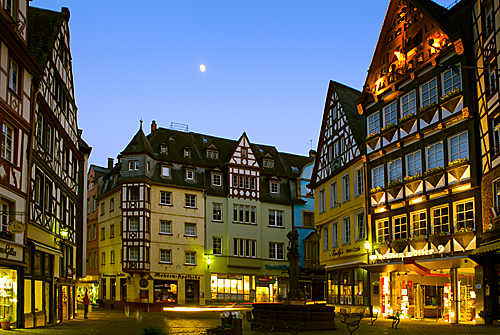
Cochem Castle
Your biography is quite interesting – you are born in Philippines but now live in the UK. Do you think that photography is more developed in Europe than in Asia?
The beauty of photography is that you can be anywhere in the world and own any kind of camera and still be able to produce great images. I’m not sure where it is more developed, but I can tell you that I’ve never seen more serious and more avid photographers per square foot than in Japan where I lived a few years ago. Unfortunately, I wasn’t taking photos yet back then. But it’s not a secret that the Japanese are pioneers in technology so it’s not surprising to find the best and latest equipment over there.

Copenhagen – Nyhavn Harbour
In this digital age, photography aficionados emerge every second in Asia, Europe, US – anywhere in the world really where a digital camera is available. Even in developing countries not necessarily known to be high-tech, photography is slowly becoming a phenomenon. In the Philippines for instance, where people are naturally creative, I am happy to see many coming out of the woodwork and finding their place in what could be a very expensive and competitive hobby or profession.

Primasens, Germany
With the Internet and various photo-sharing and social-networking, web-hosting and online printing sites abound, the whole process of photography becomes easy. Even the business side of photography is taken care of online. It seems like there is no limit to creative expression as far as photography is concerned these days, wherever you may be, as long as you have a camera and Internet access.

Burnham, England
What roused your interest in photography?
I started photography much later in life than what I would have liked, although I have been artistic since childhood. I was always trying to create something beautiful, whether it was with a pen, a paintbrush, or any artistic resource I can get my hands on. I guess it did not occur to me until much later on when I moved to Europe that the world is a beautiful creation in itself that I could just freeze that beauty and not have to craft it with my own hands, but only capture it with my eyes. That’s when I discovered photography.

Clifton, England
How did you become such a skilful photographer? Have you attended any courses?
I did not attend photography courses or workshops. But I did some extensive reading when I just started – books, online references, even my camera manual from cover to cover. I read about aperture on day one, shutter speed on day two, ISO on day three, and the rest of my time after that was spent outside shooting – that’s where I learned the most.

Amsterdam, Dutch skyline
Undoubtedly, you have traveled a lot all over the world. Can you tell us what places inspired you most?
People ask me this question often and I still have to think about it for a long time. I think I draw inspiration more from within than from what I see. It’s more motivation than inspiration for me. Inspiration is something you have to wait for; if it doesn’t come, you won’t produce anything. But motivation is more intrinsic; it’s your own personal drive to do something because you love to do it, and want to do it regardless of anything. And beauty is such a relative word anyway. I like to think that I can find and capture beauty anywhere I go.

Jagala, Estonia
Why do you prefer taking photographs during “the blue hour”?
I think it’s the best light of the day – at least myself and a million other photographers and artists think so.

Hamburg – The Dockland Office Building
Is there a place you haven’t visited yet but really want to?
I’ve barely scratched the surface of the globe and I don’t even know where to begin telling you where else I want to go. Right now, I seem to be taking one country and one continent at a time. I would like to go wherever I haven’t gone before.

Dusseldorf, Frank Gehry Buildings
Your photographs are so colorful and bright! Is the world today so vivid and glamorous?
The world becomes how you see it. Yes, in my eyes, I see the world as vivid and glamorous, mystical and enchanting, peaceful and soft. Thanks to the beauty of natural light, I don’t really need to do a lot except wait for the right light and the right time to give my images those lovely, rich and magical colors. Sometimes it takes a long time for the light to come, and sometimes it never comes – but that’s why I wait or try again.

Manchester, England
Do you think that photographers should capture beauty rather than misery and dirt?
Most photographers work with their emotions. We take photos of things that reflect how we feel about the world and how we want others to see it. There’s usually an underlying message in every photo we take. I prefer to capture beauty than misery and dirt. I want to make people smile and feel at ease when looking at my photographs. I don’t like to create any tension, so as much as possible, I keep my images clean with straight lines, graceful curves, and no unnecessary element to make the eyes wander off the picture. As far as I’m concerned, we can leave misery and dirt to the news we see or read every day or to the things we see just outside our windows. We deserve a break from these once in a while.

Stuttgart, Germany
What camera do you use?
I own a Nikon D700 and it’s been good to me.

Guggenheim Bilbao, Spain
How do people react to your photos? Are there any envious people around you?
I’ve read a quote once that says, “Behind a successful woman is a pack of haters.” It’s true what they say – you can never please everyone. When your work is out there for the world to see, you’re vulnerable to critiques – good and bad.

The Venice Carnival
However, I am happy to say that I am getting more positive than negative feedback and I am thankful about that. It is always so motivating to hear or read comments about how my work inspires others. Whenever I hear that, I am reassured that I am doing my job well, and that is all that matters to me.

Stockholm – Gilded Crown at Skeppsholmsbron
Is there a photo you are most proud of?
“Rainy Night in Hallstatt” – a photo I took during a rainy twilight in Austria was a nice surprise for me this year. It was the first photo that won me an award in my first-ever photo contest. I guess it’s safe to say that I am quite proud of it.
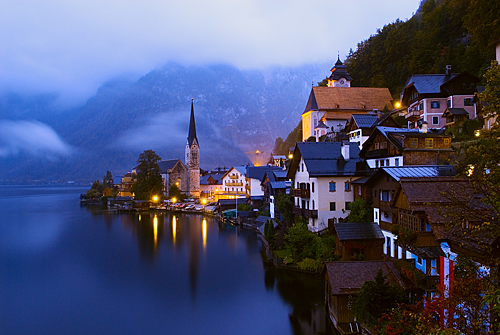
Rainy night in Hallstatt
Although most of your photos are landscape, you also have some portraits. What kind of people are the best models?
I’m still learning the ropes of portrait photography, so I’m not really the right person to ask about that. But as far as my limited experience as a portrait photographer is concerned, I would have to say that the masks during the Venice Carnevale make great models – they’re colorful and stunning, they pose for you even when not instructed to do so, and most of them are professional and experienced enough to show up during the best time of the day.
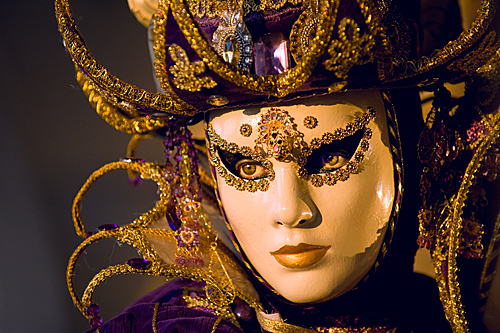
Venice Carnival 2010
Tell us about your awards!
I won the grand prize in the recent National Geographic Exceptional Experiences photo competition for the photo I mentioned earlier.
What are your professional ambitions?
Professionally, I just want to be successful in what I do, and that mostly means having the best portfolio I could possibly produce, and which I could be proud of. If I achieve that, I know that good things and opportunities will follow later and the hard work will pay off in the end.
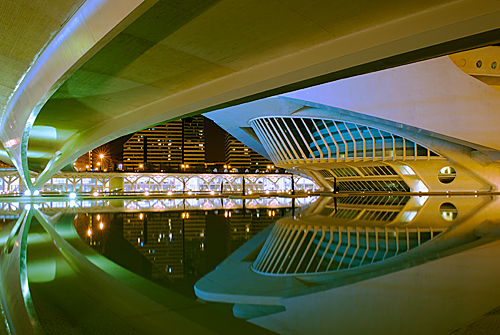
Valencia – City of Arts and Sciences
For more photos of Yen Baet follow this links:
http://www.yenbaet.com/
http://www.flickr.com/photos/rainprel/
http://www.facebook.com/YenBaetPhotography



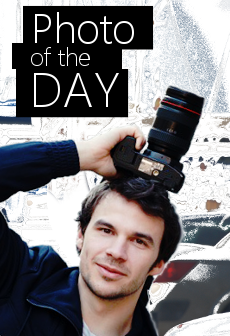







No comments so far ↓
Nobody has commented yet. Be the first!
Comment